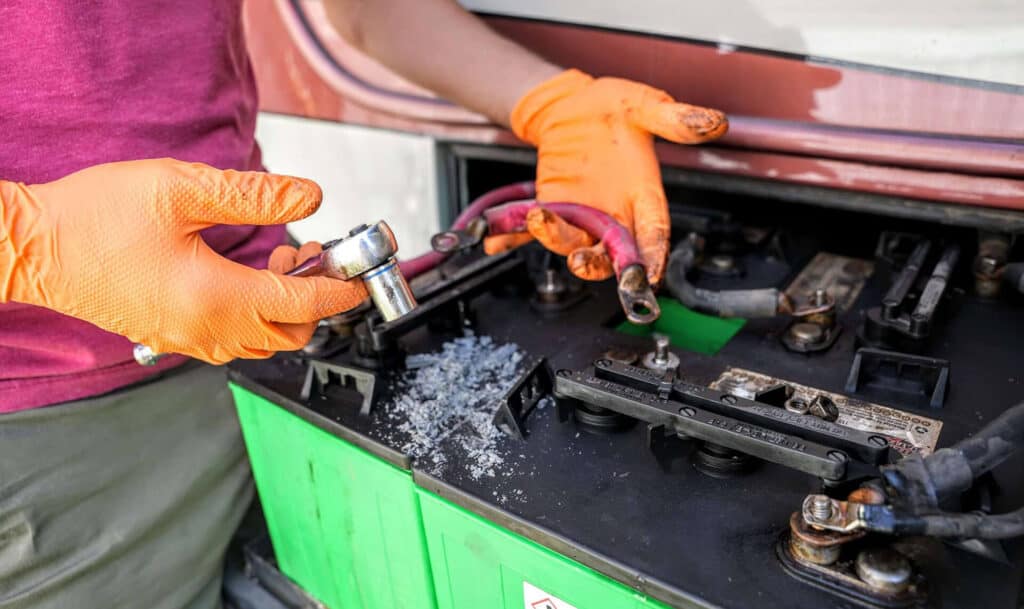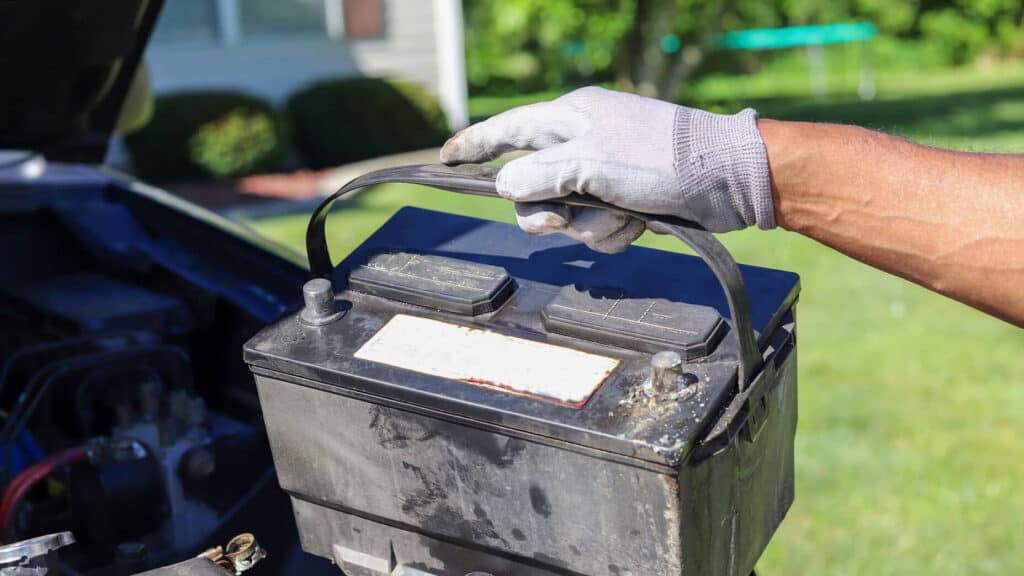Introduction: The Why and How of Disconnecting Your Car Battery Safely
Picture this: You need to disconnect your car battery for maintenance, but you’re puzzled about where to start. Disconnecting a car battery isn’t rocket science, but it does require caution. For the DIYers and the merely curious, this guide aims to answer your burning questions.
Step-by-Step Guide: Properly Disconnecting Your Car Battery
So, what is the first thing to do to disconnect a battery? Typically, you’ll need gloves and wrenches.
1. Safe Location: Always ensure your car is in a well-ventilated area before starting any work on the battery. This reduces the risk of toxic fumes accumulating.
2. Ignition Off: The car should be completely off, keys removed from the ignition, to prevent any electrical surges or mishaps.
3. Essential Tools: Preparation is key. Have the necessary tools handy—this usually means gloves to protect your hands and wrenches to loosen battery terminal nuts.
4. Protective Gear: Safety goggles and gloves are essential to protect you from any accidental spills or sparks. Do not overlook this.
5. Locate the Battery: Typically found under the hood, sometimes covered by a plastic shield. Know where it is before you start.
6. Identify Terminals: Batteries have a positive (+) and negative (-) terminal, often marked with red and black colors respectively. Make sure you can identify these before proceeding.
7. Disconnect Negative Terminal: Use your wrench to loosen the nut on the negative terminal first. Why? This decreases the risk of a short circuit, making it a critical safety step.

Terminal Debate: Why Disconnecting the Negative Terminal First Matters
The negative terminal should always be your starting point, and for good reason. Disconnecting the positive terminal first puts you at risk of creating a dangerous short circuit. This could happen if your wrench accidentally touches any part of the car’s metal frame while also connected to the positive terminal. It’s not just about sparks flying; you could potentially damage sensitive electronic components or, in the worst-case scenario, cause a battery explosion. Given the high stakes, it’s a precaution that’s well worth your attention.
Moreover, disconnecting the negative terminal first essentially ‘isolates’ the battery, cutting off the electrical pathway and minimizing the risk of an electric shock. This one simple action adds an extra layer of safety to your DIY car maintenance, ensuring that your vehicle, and by extension, you, remains unharmed during the procedure. Always think of it as an obligatory safety dance before the real action begins.
The Aftermath: Common Issues After Disconnecting a Car Battery
Unplugging a battery is never just a “plug and play” affair; it comes with its set of consequences.For starters, you’ll find that your radio presets are wiped clean, as if someone decided your favorite stations weren’t worth remembering. Your car’s clock will also assume it’s back in the Stone Age and reset itself, requiring manual readjustment.
Moreover, the car’s computer might go through a phase of ‘amnesia,’ needing time to relearn and recalibrate settings like the fuel mixture and idle speed. This is more than just an annoyance; it can affect the car’s performance until the system corrects itself. While these are not catastrophic issues, they’re inconveniences that remind us of the interconnectedness of modern vehicle systems. Know what to expect and plan accordingly to minimize these minor yet irritating aftermaths.
Resetting Your Car’s Systems: What to Expect and How to Do It
By following these guidelines, you’ll navigate the intricacies of disconnecting and reconnecting your car battery like a pro, ensuring both your safety and the longevity of your car’s electrical systems.
• Automatic Reset: Most modern vehicles automatically reset their basic systems like the onboard computer and engine settings after you’ve reconnected the battery and driven for a while.
• Manual Input: For systems like your radio and clock, you might need to manually input settings or codes. These are often found in your car’s owner manual.
• Consult Manufacturer: Some newer cars have more complicated systems that might require you to consult the owner’s manual or even the manufacturer’s website for reset instructions.
• Drive to Reset: In some cases, driving the car for a short period can help the onboard computer to recalibrate settings, making manual adjustments unnecessary.
Clearing Codes vs. Resetting the Computer: What Disconnecting the Battery Accomplishes
Disconnecting a car battery serves multiple purposes, one of which is clearing error codes.They often disappear once you disconnect and reconnect the battery. But why does this happen? The computer in your car essentially goes through a hard reboot, wiping away stored codes and reverting settings to their factory default. This is a quick and convenient way to clear error codes, but keep in mind that it’s a temporary solution. If there’s an underlying issue, the codes will come back.
Then comes the question: How long should I disconnect my car battery to reset the computer? Here’s where you don’t want to rush things. Patience is key. Detaching the battery cables for about 15-20 minutes should do the trick. This period allows the computer to fully drain its stored energy and reset. However, make sure to consult your car’s manual. Some newer models have computers that don’t take kindly to being reset, and you may need to follow a specific process to avoid complications.

Battery Longevity: How Long a Disconnected Battery Will Stay Charged
Now, let’s dive into another conundrum. Generally, a new, fully charged battery can survive without a hitch for up to four weeks when disconnected. However, this lifespan can be much shorter for older batteries or those in less-than-ideal conditions.
By considering these factors, you can make an informed decision on how best to maintain your car battery when it’s not in use:
• Battery Age: The older a battery, the shorter its charge retention capacity. An old battery will lose charge much more quickly than a new one.
• Chemical Composition: The type of battery (e.g., lead-acid, lithium-ion, etc.) has a bearing on its charge retention. Different types have different rates of natural discharge.
• Ambient Temperature: Cold weather is particularly harsh on batteries, causing them to lose charge at a faster rate compared to warm conditions.
• Natural Discharge: All batteries, even when disconnected, will naturally lose some charge over time. This is an unavoidable aspect of battery chemistry.
• Extended Inactivity: If you know your car will be inactive for a long period, it’s advisable to connect the battery to a maintainer or charger. This mitigates the natural discharge and keeps the battery in optimal condition.
• Engine Start Assurance: Using a maintainer or charger ensures that your car will start without issue when you return to it, avoiding the frustration of a flat battery.
Conclusion: Safe Practices for Disconnecting and Reconnecting Your Car Battery
At the end of the day, the process of disconnecting your car battery can be straightforward when you know what to do and what to avoid. Whether you’re a DIY enthusiast or someone who wants to understand more about their car, remember that safety always comes first.
For those who’d rather have experts handle the more complicated aspects of car maintenance, Uchanics has got you covered. Book an appointment now, and let us take the hassle out of your auto care needs.
